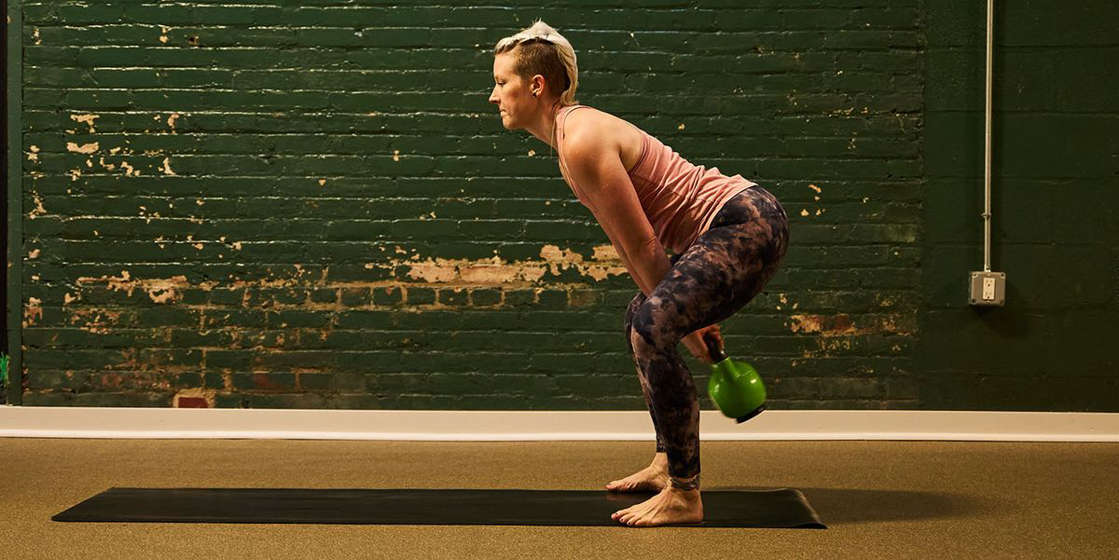Runners, You Should Strength Train in the Off Season to Return to the Start Line Stronger

It’s been a long season. You’ve competed in numerous races, some good and some bad. Now it’s time to hit the reset button before you get back to the grind. While you might feel ready to turn your brain off before you think about next year’s goals, you also might worry that too much time off could end up hurting your performance down the road. So what can you do in the off season to ensure you’re not wasting valuable training time? The short answer: strength train.
“It’s hard to get someone who is pursuing a specific goal in sports to just not think about it or not do anything,” says Blair Henderson, M.S., who is a certified personal trainer and exercise physiologist based in Missouri City, Texas. “I think a crucial part of performance is being able to pull back a little bit and engage in other forms of exercise.”
So instead of fretting about missing long distance runs, put your focus into strength training, which will still benefit your performance when you line up at the start line again.
We talked to Henderson about why strength training in the off season is so valuable, and what kind of exercises you can do to come back stronger. Here's what to know.
Why should I strength train in the off season?
Strength training in the off season is all about building a foundation, Henderson says. Your goal is to target any weak areas that may have come up at the end of the your racing season, whether weak hips, glutes, hamstrings, or any other lingering issue that might have led to aches and pains. By addressing these issues, your body will be ready to handle the harder work ahead when racing picks back up.
“[Strength training] allows you to hold onto what you build in the off season as long as possible,” Henderson says. “This allows you to have a longer season, simply because you have built up that strength and stamina.”
Strength training doesn't have to add too much to your busy schedule, either, as you don't need to lift weights every day. In fact, the American College of Sports Medicine recommends two to three days per week for the optimal outcome.
What strength exercises should I start doing?
According to Henderson, you’re not trying to bulk up or get more explosive in the off season. Like any type of training, you start with the basics and gradually build into the harder work. That means starting with some basic movement patterns.
Henderson recommends these four exercises for anyone looking to get stronger in the off season and to ensure a healthy buildup.
If you're brand new to these moves, start doing them with just your body—no weights. As you get stronger, add in five- to 10-pound dumbbells, a light barbell, or a 10-pound kettlebell. Then increase that weight as you get comfortable and can perform reps and sets without feeling fatigued.
To build strength, go for 4 to 8 reps of each exercise (the heavier you lift, the lower the rep count, until you build up that strength) and aim for 3 to 4 sets. Take plenty of rest time between exercises and sets.
Deadlift
Deadlifts are a functional exercise, meaning you perform the movement in everyday life, as well as on the run. They work the posterior chain—a.k.a. your glutes, hamstrings, lower and upper back muscles—along with your abs, all of which are essential to good running form.
How to do it: Start standing with feet shoulder-width apart. Hinge at the hips by sending your butt back, knees bending slightly. Keeping a flat back and shoulders down and away from ears, grab a barbell or set of dumbbells. Drive your feet into the floor and engage glutes to stand back up. Repeat.
Pro tip: Make sure to keep your core engaged the entire time so your low back doesn't do all the work.
Bulgarian Split Squat
A Bulgarian split squat is another great functional exercise that targets your quads, hamstrings, glutes, calves, and your core. Those muscles are key for running. This unilateral (or one-sided) exercise is particularly great for strengthening each side of your body. This helps you avoid muscle imbalances which can lead to injury.
How to do it: Start standing in front of a chair, step, or bench, facing away from it. Step far enough away from the bench that you can comfortably rest the top of your back foot on it. Lower down into a lunge position, front knee bending 90 degrees, and back knee hovering just off the floor. (If front knee goes over toe, step the front foot forward more.) Drive through front foot to stand back up. Repeat. Then switch sides.
Pro tip: Keep chest tall, core tight, and front knee tracking over toes to maximize the advantages of this move.
Glute Bridge
Glute bridges are a classic strength exercise, particularly for runners. They're designed to work your glutes and hamstrings, both of which promote efficient running mechanics.
How to do it: Start lying faceup, knees bent with feet planted. Place arms down by sides on floor, with palms facing down. Drive feet into floor, squeeze glutes and lift hips up. Pause, then slowly lower hips back to floor. Repeat.
Pro tip: Don't arch the low back—when you lower your hips down, your back should be flat against the floor. A slight pelvic tilt toward the ceiling will help you maintain this position, plus it gets the core firing.
Kettlebell Swing
Kettlebell swings are a surefire way to hit a bunch of important muscle groups—namely the core, glutes, hamstrings, and back. Your core and back help hold you upright as you hit your stride, while your hamstrings and glutes must be strong to power good running form. Arm swing is also really important for runners, as it helps with momentum and balance, and a kettlebell swing can help with that.
How to do it: Start standing with feet slightly wider than hip-width apart. The kettlebell should be on the floor in front of you, about arm’s length away. Hinge forward at the hips, sending butt straight back, and grab the handle of the kettlebell with both hands, tipping it toward you. Pull the kettlebell straight back between legs and behind you. Then, with power, drive the feet into the floor and send hips forward to swing the kettlebell up to about shoulder height. Let the kettlebell lead you back down into a hinged position, with the kettlebell going back between legs. Repeat.
Pro tip: Make sure you’re not squatting while performing the swing—think of the movement like a quicker, more powerful deadlift motion (hinging at the hips). Also, core engagement is super important, so think about hitting a plank position at the top of the swing. Follow the momentum of the kettlebell as you go, too.
The post Runners, You Should Strength Train in the Off Season to Return to the Start Line Stronger appeared first on Runner's World

